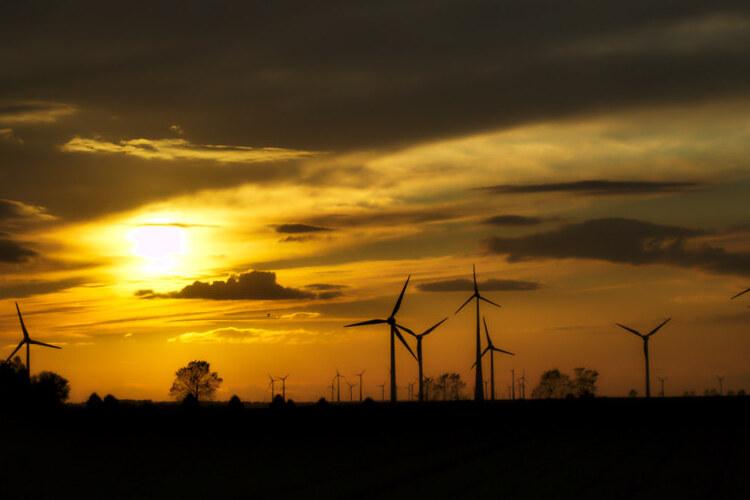As the pace of the energy transition accelerates, grid infrastructure is having to endure intensifying natural disasters and accommodate increasing volumes of renewable energy. To combat these challenges, collaboration, and the use of new technologies to modernize aging grid infrastructure, is critical to build resilience and stability. This is according to AiDash, a leading provider of vegetation management and other satellite- and AI-powered operations, maintenance, and sustainability solutions.
Extreme weather events had a substantial impact on grid infrastructure in 2022 with storms and hurricanes causing damage to transmission and distribution lines, extreme hot and cold weather resulting in grid malfunctions and floods shutting power plants down. With new research explicitly linking extreme weather events to climate change, and 2023 set to be the 10th year running that temperatures will reach at least 1C above average, the grid’s exposure to extreme weather events is only set to increase.
In addition, power grids are grappling with ever increasing energy demands and added complexity in energy sources, with renewable power subject to variable supply patterns. As a result, some renewable energy projects are waiting up to 10 years for a connection, with experts predicting this timeline will increase to 15 years, at a time when the pressure to decarbonize is escalating.
To compound the issues, grid infrastructure is aging. According to the U.S. Department of Energy (DOE), nearly 70% of the US’s national grid is more than 25 years old, and the UK began building its grid infrastructure as far back as 1935, meaning grid resilience is more in the balance than ever.
To tackle these infrastructure and environmental challenges AiDash has joined forces with Schneider Electric to launch a grid resilience offer designed to support utilities in balancing grid reliability, sustainability, and cost. The new solution addresses the issues of aging power grids, decarbonization and distribution of power generation, vegetation and growth inside rights-of-way, and the impact of storms and wildfires by:
· Improving data accuracy to better understand reliance issues and detect ways to tackle them· Optimizing assets and capital investments
· Improving vegetation management and pruning cycles
· Forecasting natural disaster outages
“With growing natural disasters in today’s world, it’s essential to leverage several types of technology to prevent power outages, predict future outcomes, and build climate resilience,” said Abhishek Singh, co-founder, and CEO of AiDash. “Our partnership with Schneider Electric enables customers to leverage Schneider Electric’s asset management and our vegetation management capabilities to help utilities better understand resilience issues and detect ways to tackle them based on real-time data and insights.”
“Utilities face challenges on multiple fronts: outdated infrastructure, increasing energy demands and the integration of clean energy, all while facing more extreme weather events. The most noticeable effect has been a 64% increase in power outages with the majority linked to weather and vegetation. AiDash’s satellite and AI-powered solutions are providing utilities an advantage to overcome these hurdles,” said Alexis Grenon, SVP Digital Grid, Schneider Electric. “We are excited to work with AiDash to provide a joint solution that helps utilities increase reliability of the grid while addressing the challenges of the new energy landscape.”
The grid resilience offering adds to AiDash’s list of products that leverage satellites and AI to help customers make more data-driven decisions. Its Intelligent Vegetation Management System (IVMS) helps utilities balance reliability, sustainability, and cost. The Disaster and Disruption Management System (DDMS) forecasts storms, wildfire outages, and damages to plan quickly and restore safely for utilities as well as energy companies, governments, and cities. The system works in near real-time before, during, and after a major natural disaster or extreme event.
A full list of features for the Grid Resilience offer includes:
· Grid Information Management
· Asset Inspection and Maintenance
· Capital Project Management
· Vegetation Inspection and Management
· Storm and Wildfire Resilience
In 2022, SE Ventures, a Silicon Valley-based global venture fund backed by Schneider Electric, led a $10M investment in AiDash, to drive climate resilience for utility assets. The funding is supporting AiDash’s satellite and AI-powered vertical SaaS products including IVMS, DDMS and Intelligent Sustainability Management System (ISMS).
AiDash and Schneider Electric are officially launching the grid resilience offering at DISTRIBUTECH 2023 (February 7-9, 2023) in San Diego, CA, where the team will be on the ground at Booth #1529. Both companies will also be conducting a presentation on the new offering at the conference.
To learn more about how AiDash is helping core industries become more resilient, efficient, and sustainable, visit www.aidash.com.
To learn more about Schneider Electric, visit www.se.com/es/

